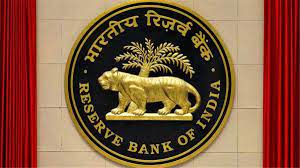In a major shift of stance, large corporates and conglomerates may own banks if the ideas of an internal working group (IWG) constituted by the Reserve Bank of India (RBI) are accepted. The IWG recommends sweeping changes and simpler rules that could altogether alter the Indian banking landscape with the presence of many more banks of all hues.
For example, large, well-run non-banking finance companies (NBFCs), with an asset size of Rs 50,000 crore and above may develop into banks post 10 years of operations as soon as they cross the due exercise. These could possibly be owned by a corporate house so a Bajaj Finance, L&T Financial Holdings or an M&M Financial could make the cut.
Many NBFCs have been eager to show into banks as it could give them entry to low cost CASA deposits even when assembly statutory ratios are initially costly. For its half, RBI could choose NBFCs develop into banks as they might then be better regulated and topic to extra laws.
A last stake of 26%, because the IWG suggests, up from the present 15% could possibly be a sweetener. If accepted, it could standardise the relaxation given to Uday Kotak, promoter of Kotak Mahindra Bank, earlier this yr. For non-promoter shareholders, a uniform cap of 15% has been prescribed.
Nevertheless, the IWG feels the preliminary restrict of a 40% shareholding stays, with no higher ceiling in the course of the first 5 years. Funds banks meaning to convert to a small finance financial institution (SFB) want a track file of three years as a funds bank, decrease than the present minimal of 5 years.
SFBs and payments banks could also be listed inside six years from the date of reaching a net value equal to prevalent entry capital requirement prescribed for universal banks or 10 years from the date of commencement of operations, whichever is earlier.
The modifications come in opposition to the backdrop of placing the Indian economy on the path of fast growth which might not be possible with out strong credit establishments. However, specialists warning the liberal norms want be accompanied with changes that ensure stricter supervision and oversight of the banking system.
For enterprise teams to arrange banks the Banking Regulation Act, 1949, must be amended. The target can be to “prevent connected lending and exposures between the banks and different monetary and non-financial group entities” and to strengthen the supervisory mechanism for big conglomerates, together with consolidated supervision.
Whereas acknowledging the risks posed by corporate ownership of banks, the IWG believes such entities may be an vital supply of capital and might carry of their expertise, administration experience and strategic route to banking. “It is also a fact that many of such corporate/industrial houses have been successfully operating in other financial segments,” the panel famous. It added that internationally, there are only a few jurisdictions which explicitly disallow large corporate houses, and even in these jurisdictions, it isn’t a settled issue.
The group recommends a better minimal preliminary capital for licensing new banks of Rs 1,000 crore from Rs 500 crore for common banks and of Rs 300 crore from Rs 200 crore for SFBs. It additionally feels the non-operative monetary holding firm (NOFHC) ought to proceed to be the popular construction for all new common financial institution licences and obligatory solely in circumstances the place the person promoters/selling entities/changing entities produce other group entities.
Whereas banks licensed earlier than 2013 could transfer to an NOFHC structure at their discretion, as soon as the NOFHC structure attains a tax-neutral standing, all banks licensed earlier than 2013 shall transfer to the NOFHC structure within 5 years from announcement of tax-neutrality.
Until the NOFHC structure is made possible and operational, the issues with regard to banks endeavor totally different actions by means of subsidiaries/joint ventures/associates have to be addressed by means of appropriate laws, the group mentioned. Banks at present below NOFHC structure could also be allowed to exit from such a structure if they don’t have different group entities of their fold.
The panel maks a case for making certain harmonisation and uniformity in numerous licensing guidelines. “Whenever new licensing guidelines are issued, if new rules are more relaxed, benefit should be given to existing banks, and if new rules are harder, legacy banks must also conform to new tighter laws, however a non-disruptive transition path could also be supplied to affected banks,” it mentioned.
The IWG was chaired by RBI central board director PK Mohanty; members have been Sachin Chaturvedi, additionally central board director, Lily Vadera and SC Murmu, each EDs on the central bank, and CGM Shrimohan Yadav was the convenor. The report has been placed on the RBI website for feedback from stakeholders and members of the general public. Feedback on the report could also be submitted by January 15, 2021.
Source: A-N








 Finance
Finance






